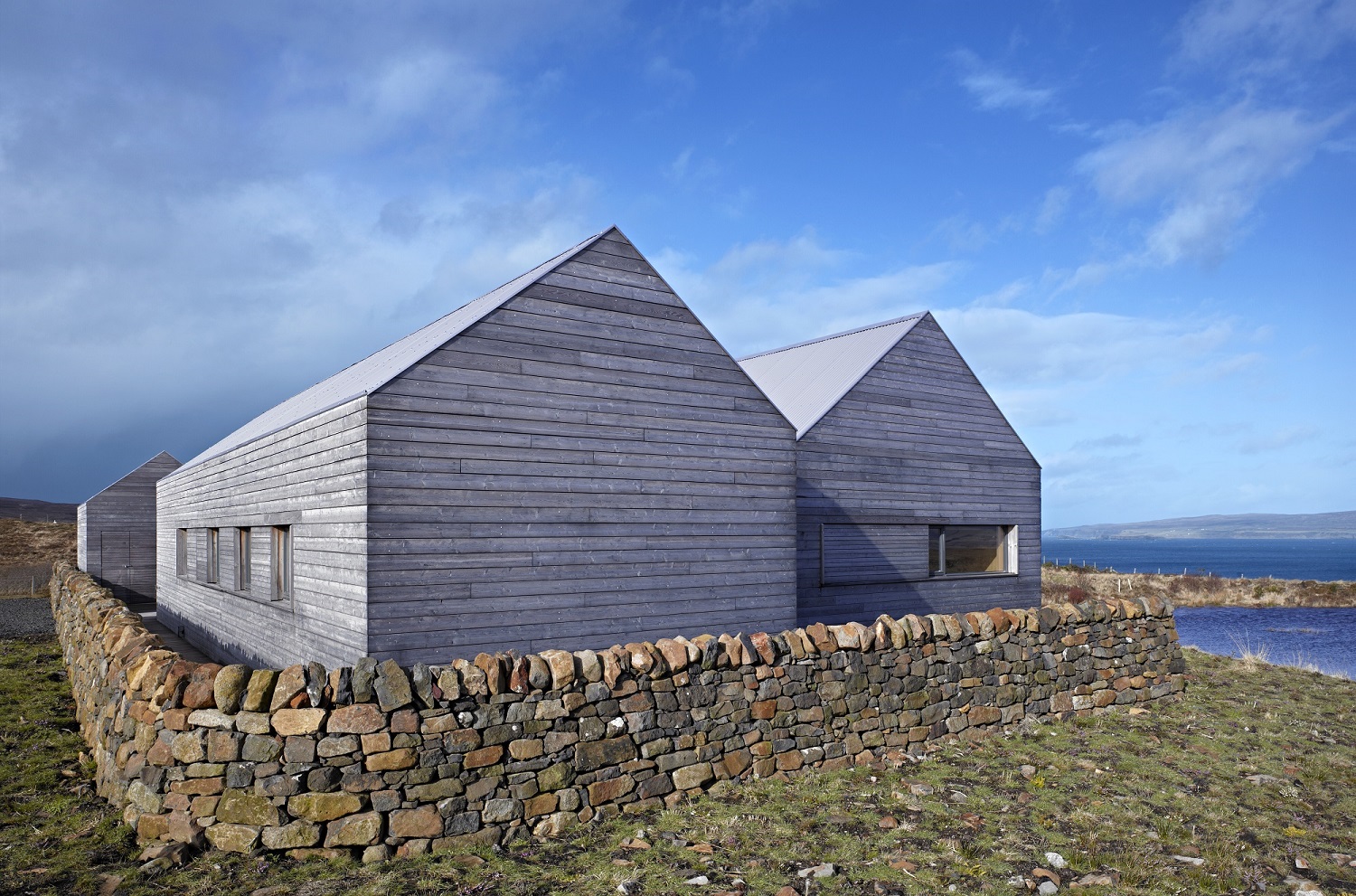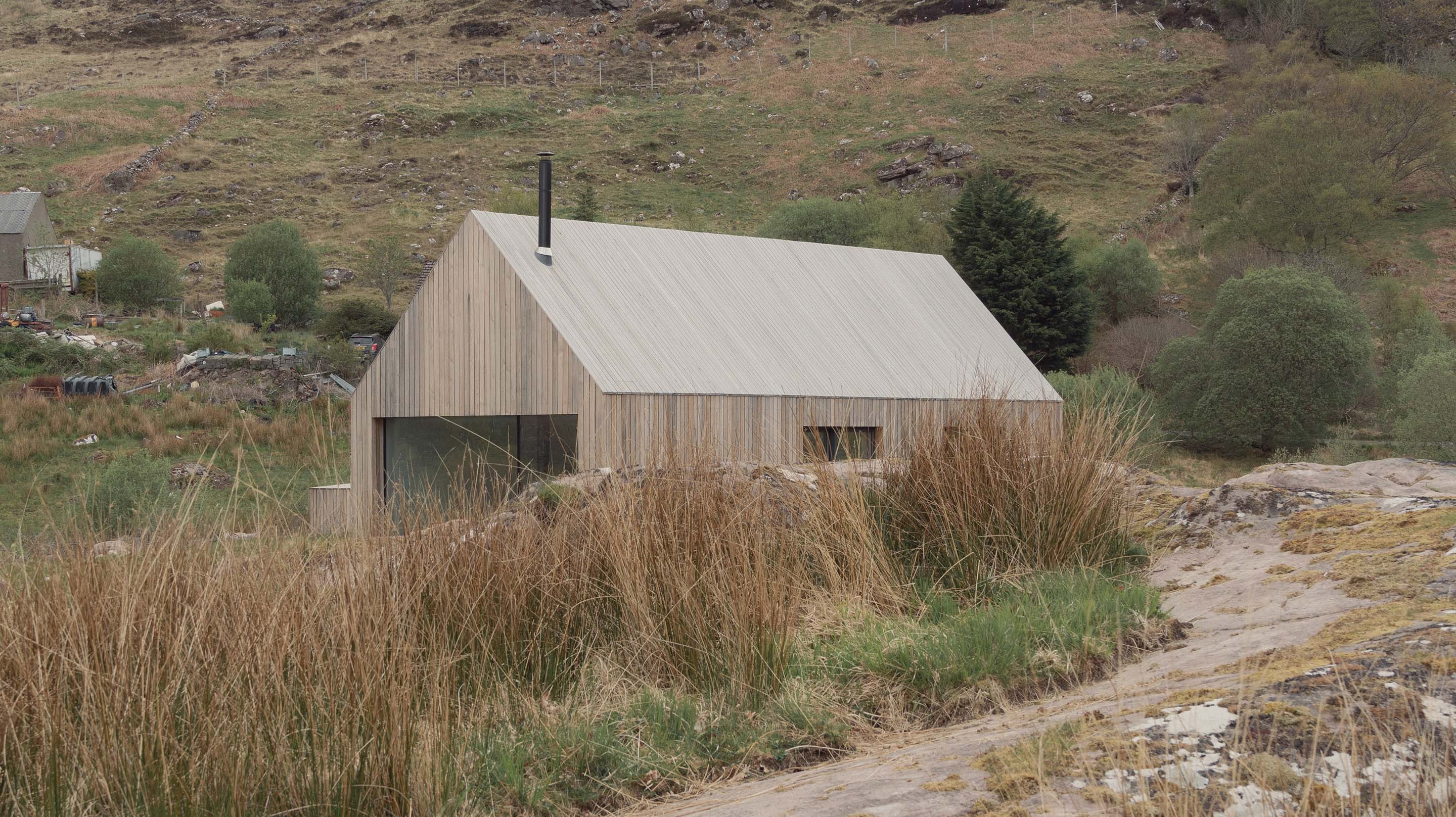Preserving Legacies: The Delicate Balance of Conservation and Historical Architecture
In the ever-evolving tapestry of our built environment lies a profound responsibility to honour our history. This is the essence of architectural conservation. It’s the art of preserving our heritage while embracing the future. It's the interplay between history and progress, ensuring that the stories etched in our buildings will live for generations.
In this blog, we'll explore the significance of architectural conservation, bridging traditional craftsmanship with modern restoration techniques. Together, we'll witness the transformation of cherished landmarks, reviving them for the 21st century.
Join us in this quest to harmonize tradition with innovation, driven by a deep passion for architectural excellence. Let's breathe life into the silent witnesses of bygone eras as we delve into the heart of preservation.

Boreraig, a project by Dualchas Architects
The Importance of Preserving Historical Architecture
Preserving our historical architecture isn't just about bricks and mortar; it's about safeguarding the very essence of our culture and heritage and an investment in our future. Here's why it matters:
Appreciation of Cultural Heritage
Every building tells a story, reflecting the values, customs, and craftsmanship of the era it was born in. By preserving historical architecture, we ensure that these stories continue to enrich the community for generations to come.
It's a way of honouring the generations that came before us, celebrating their creativity, and passing on this rich tapestry of culture to future generations.
Reduces Environmental Impact
One of the greenest things we can do is preserve existing buildings. It's a sustainable choice that saves resources and energy compared to the construction of new structures.
By breathing new life into historical buildings, we lessen our environmental footprint, contributing to a more sustainable and eco-conscious future.
Connects Communities with Their Past
Historical architecture is a living link to our roots. It allows us to physically touch and experience the past, fostering a sense of belonging and continuity. It's a reminder that we are part of a larger narrative, a thread in the fabric of history.
Through these buildings, we can walk in the footsteps of our ancestors, forging a deeper connection to our community and its legacy.
Increases Economic Value
Preserving historical architecture isn't just a labour of love; it's a savvy economic move too. These buildings have intrinsic value, both culturally and economically. They draw tourists, stimulate local economies, and often appreciate in value over time.
It's an investment in the future, creating a lasting impact on the prosperity of communities.
Brings People Together
Historical buildings are more than just physical structures; they are gathering places, hubs of activity, and focal points for communities. When we invest in their preservation, we're investing in spaces that foster social interactions, cultural events, and shared experiences.
They become anchors that bring people together, which strengthens the bonds of our society.
Modern Methods in Architectural Conservation
When it comes to architectural conservation, tradition and technology walk hand in hand. Modern methods have revolutionized the way we preserve historical treasures, allowing us to protect the past while embracing the future.
From advanced materials to digital documentation, let's discover the cutting-edge techniques that breathe new life into our architectural heritage.
Site Surveys
Before the restoration process begins, a meticulous site survey is conducted. Advanced technologies like 3D laser scanning and drone photography allow us to capture every intricate detail of the structure.
This not only aids in accurate documentation but also provides a blueprint for future preservation efforts.
Materials Science
Today's conservationists have a wealth of innovative materials at their disposal. From eco-friendly lime plasters to state-of-the-art weather-resistant coatings, these modern solutions not only enhance durability but also harmonize seamlessly with the historical fabric of the building.
Structural Stabilization
Advanced engineering methods enable us to reinforce the structural integrity of historical buildings. Techniques like underpinning and seismic retrofitting ensure that these treasures stand tall for generations to come, while also meeting modern safety standards.
Energy Efficiency Upgrades
Preserving historical architecture doesn't mean compromising on energy efficiency. Advanced insulation materials, efficient HVAC systems, and solar solutions can be discreetly integrated to ensure that these buildings not only tell stories but also contribute to a greener future.
Digital Documentation
In the digital age, conservationists utilize Building Information Modeling (BIM) and other digital tools to create comprehensive virtual models of historical structures.
This not only aids in planning and decision-making but also serves as a valuable archive for future generations.
Adaptive Reuse
One of the most exciting modern conservation approaches is adaptive reuse. It involves repurposing historical buildings for contemporary functions.
Whether it's transforming an old factory into chic apartments or a heritage church into a vibrant community space, this method allows these structures remain relevant and cherished.
Monitoring and Maintenance
Modern technology allows us to implement real-time monitoring systems to track the health of historical architectures. This proactive approach can address any potential issues promptly, safeguarding these architectural treasures for the long haul.
Balancing Restoration with Modern Needs
Restoring historical architecture isn't simply about reviving the past; it's also about ensuring that these treasures remain relevant and functional in today's world.
Respectful Adaptations
When modern needs clash with historical features, thoughtful adaptations is the key. This involves finding innovative ways to integrate modern amenities without compromising the integrity of the original design to make room for preservation and progress.
Modern Functionality
Historical buildings often require adjustments to accommodate contemporary uses. Skilled architects and conservationists meticulously plan and implement these changes, ensuring that spaces are not only functional but also maintain their unique character. It's about enhancing usability without sacrificing authenticity.
Accessibility for All
Today's world demands inclusivity. It’s important to ensure that historical buildings are accessible to all, regardless of mobility. This may involve subtle modifications or creative solutions to seamlessly blend with the architectural fabric.
Smart Integration of Technology
From hidden wiring to discreet climate control systems, modern technology can be adapted into historical structures. This ensures that occupants enjoy the comforts of the 21st century without compromising the visual integrity of the space.
Sustainable Practices
Modern needs encompass sustainability. Conservationists are adopting eco-friendly practices, from energy-efficient lighting to rainwater harvesting, aligning historical buildings with contemporary environmental standards. It's a testament to the adaptability and timelessness of these architectural marvels.
Case Studies: Reviving Historical Architectures
Dualchas Architects, an award-winning Scottish architecture, is well-known for its reputation to combine modern ideas and technology with a respect for the past.
One of their projects, Diabeg, is the perfect example of seamless integration of history with modern design. Diabeg is a crofthouse located in Torridon - a locale in the midst of Scotland's wilderness.
The house crumbled in 1912 and only a patchwork of stone and corrugated iron remained. Now, what was once a shelter for sheep is turned to a unique two-bedroom residence. It’s divided into two wings with different purpose – one is for the master bedroom while the other room will be the primary living space along with an additional bedroom.
To preserve the historical aesthetic of the existing ruin, Dualchas Architects meticulously planned to either restore the existing stonework or deconstruct it to rebuild - depending on which option proves the most economical.
The deteriorating rusted metal roof of the old structure is replaced with a new corrugated steel corten roof - a choice inspired by the desire to reflect the original colour and texture.
In the new living wing of Diabeg, Dualchas created a reflection of the existing ruin to allow independent appreciation. The use of clad in untreated larch rainscreen for both walls and roof presents a subdued palette, contrasting elegantly with the original's light stone and rusty red roof.
The use of frameless glass to connect the two wings introduces an intriguing architectural feature. This design choice emphasizes the distinction between the structures, allowing the house to stand as two distinct gabled forms. This harmonious blend of historical and contemporary elements imparts a character that is unmistakably unique to Diabeg.
Through this solution, it shows that Dualchas Architects is committed to preserving its historical aesthetics by balancing preservation and progress.
You can also check out this project for another wonderful historical preservation project by Dualchas Architects.

Exterior photo of Diabeg
The Future of Conservation: Challenges and Solutions
As we look ahead to the future of architectural conservation, we're met with both promising horizons and significant challenges. Let's delve into these hurdles and its solutions to guide us forward:
Lack of Funding
Preserving historical architecture demands financial resources. Yet, in an era of competing priorities, funding for conservation efforts can be scarce. To bridge this gap, public-private partnerships and grants dedicated to heritage preservation play a pivotal role. Raising awareness about the economic benefits of preservation can also garner support from both public and private sectors.
Serving the Needs of Community: Striking the Right Balance
Historical buildings are not frozen in time; they serve as vibrant spaces for communities to thrive. Adapting these structures to meet modern needs while preserving their historical integrity is a delicate task. Engaging with local communities and stakeholders is essential.
Their insights and needs should inform the conservation process, ensuring that these spaces remain relevant hubs of activity and cultural significance.
Lack of Awareness on Cultural Heritage
Preserving our architectural heritage requires a collective understanding of its value. Sadly, many may not fully appreciate the cultural significance of historical buildings. Education and outreach initiatives play a vital role in raising awareness.
By sharing stories, conducting guided tours, and hosting events, we foster a deeper connection between communities and their architectural legacy.
By tackling these challenges, we reaffirm our commitment to safeguarding the tangible echoes of our shared history. Through collective effort, education, and innovative approaches, we can stride confidently to a future where our architectural heritage stands tall and woven seamlessly into the fabric of our evolving world.
Preserving historical architectures with Dualchas Architects
As we navigate through the intricate tapestry of history, we are reminded that each building is a chapter in a larger narrative, a testament to the ingenuity and creativity of those who came before us.
Partnering with professionals and experts like Dualchas Architects in preserving heritage buildings is not just a choice; it's a commitment to excellence in architectural conservation. Our track record of seamlessly blending modern ideas with a deep respect for the past is a testament to our dedication to this craft.
We are known for our expertise in modern designs, innovative ideas, and technical skill from new builds to renovations. Restoring the life of a property is a big task and one we approach with a respect for what is excellent about the existing and an open mind on how it can be raised up to something extraordinary.
In the grand tapestry of history, each conservation effort is a brushstroke, painting a portrait of our collective identity. It's a tribute to the ingenuity of our ancestors and a gift to generations yet to come. Together, we take this journey knowing that in our hands lies the power to preserve our story for eternity.
